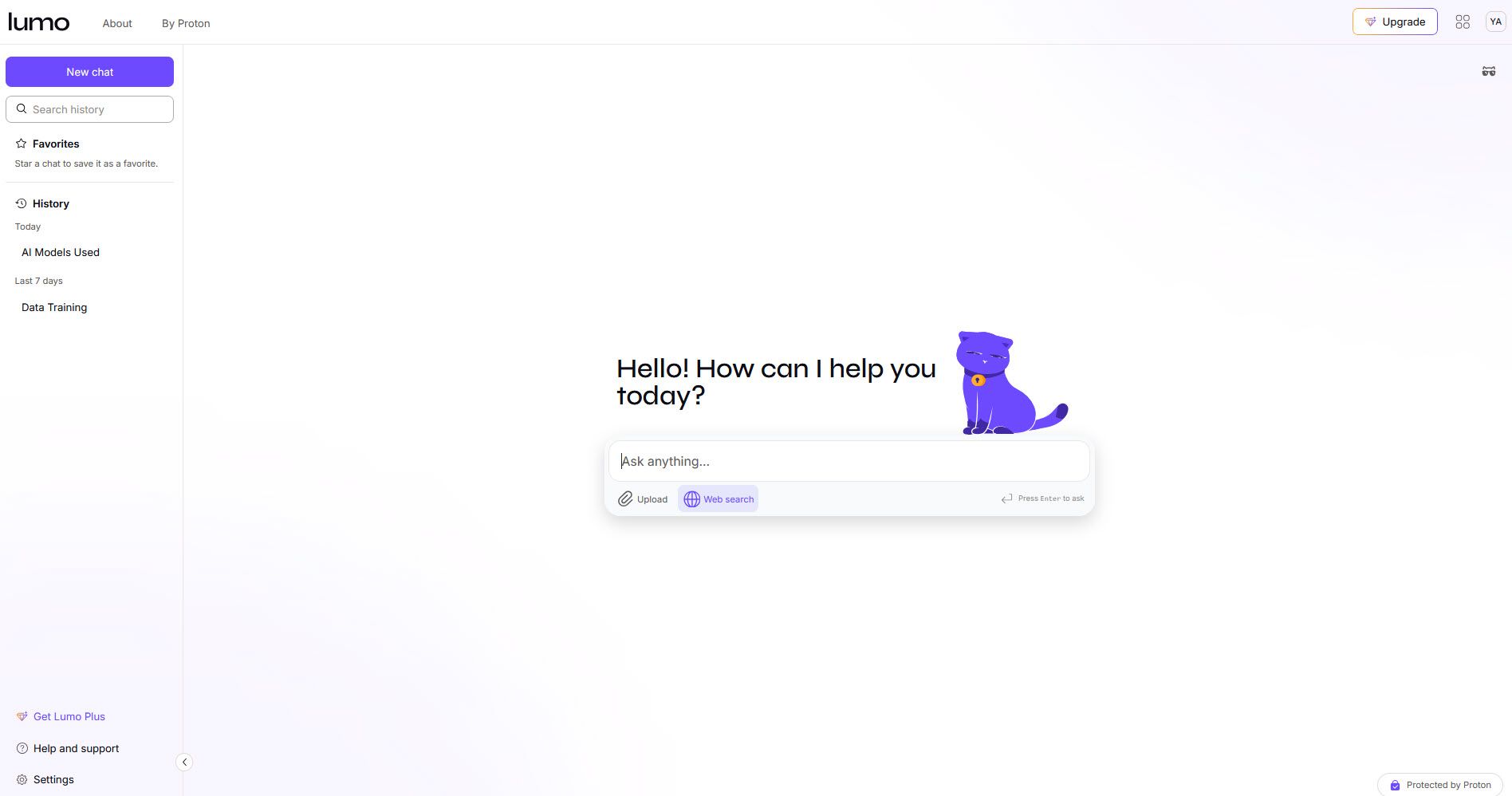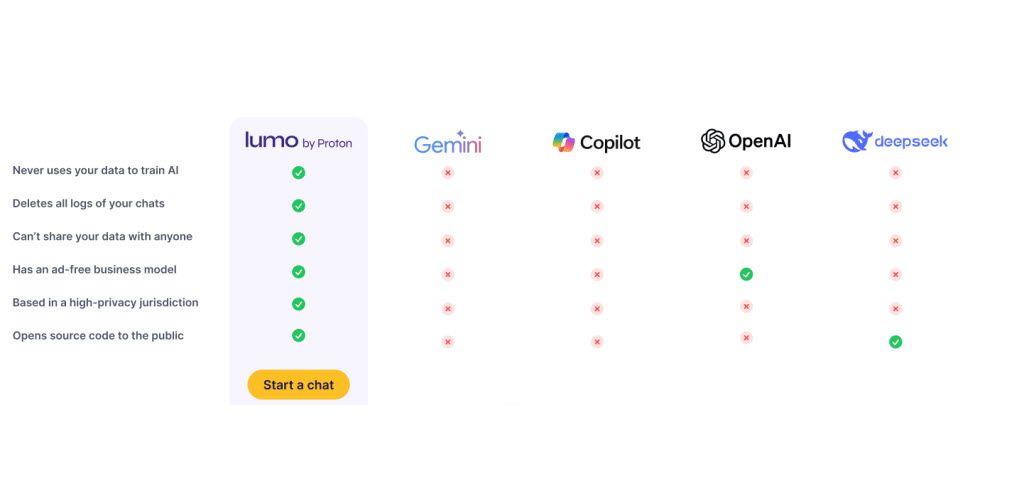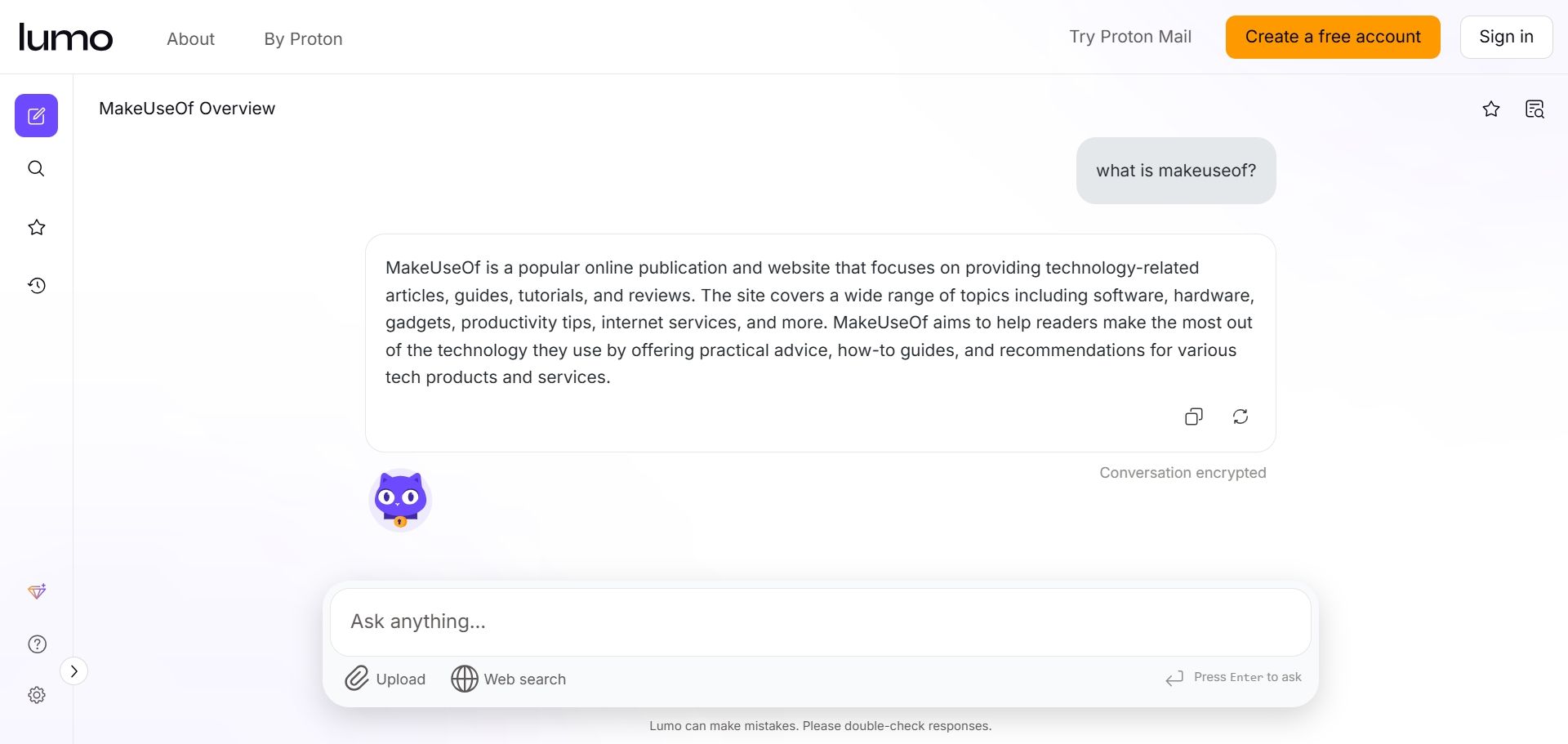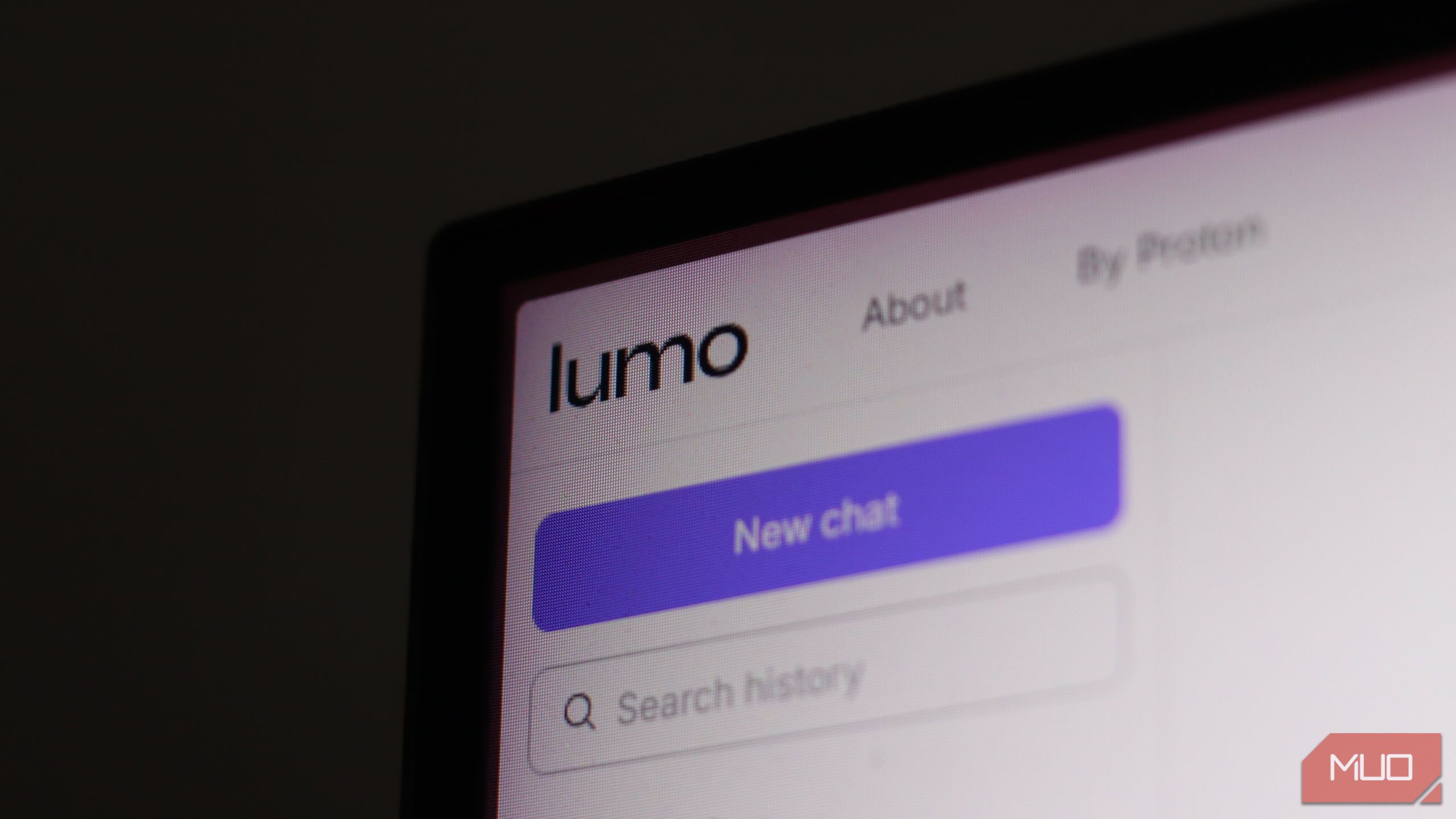Among the crowded world of AI chatbots, there’s finally one that respects your privacy. I tested it, and it gives you the benefits of most AI chatbots—without farming your personal data in return.
Lumo Is the Only Chatbot That Protects Your Privacy
Most, if not all, AI chatbots like ChatGPT, Gemini, Claude, and more use data collected from your conversations to further train their AI models. As you can probably guess, this poses serious privacy risks, especially if you’re using the chatbot for official work.
Lumo, on the other hand, is here to change that. It’s built by Proton, the privacy-first Swiss company that builds all its products around privacy, security, and transparency. Since the company is exclusively supported by its subscribers instead of advertisers, it has no incentive to farm your private data for ads.
This means that when you’re using Lumo, you have several privacy benefits compared to other chatbots:
- No logs: Lumo doesn’t log your conversations server-side. Any saved conversations reside locally on your devices.
- Zero-access encryption: In addition to saving data locally, Lumo also cannot access those conversations, either, using local encryption to protect your data.
- Your data isn’t shared: The chatbot doesn’t share your conversation data with third-party vendors, advertisers, or government agencies. Its servers are based in Switzerland and are outside US jurisdiction.
- Lumo doesn’t train on your data: Lumo doesn’t use your conversations to train its AI models, protecting your personal data from being used to generate output for others.

Related
AI Is Coming for Your Social Media Data: Can You Do Anything About It?
Companies are using and selling social media data to train AI models. What can the ordinary social media user do about it?
These benefits make Lumo far more privacy-focused compared to popular chatbots. You also get a Ghost mode feature that deletes your current chats as soon as you close them.
Where Does Lumo’s Training Data Come From?
Apart from its privacy benefits, Lumo uses open-source AI models optimized by Proton. Each model is picked automatically based on your task. The current model lineup includes:
- Mistral Nemo: Trained jointly by Nvidia and Mistral AI, this model handles general tasks.
- Mistral Small 3: An updated version of Mistral’s compact model optimized for efficiency.
- Nvidia OpenHands 32B: Handles code generation and programming tasks.
- OLMo 232B: Fully open-source language model.
OLMo 2 is developed by the Allen Institute for AI and is one of the most transparent AI models in the world. It also provides complete access to its training datasets, code, and evaluation methods. All of the models used by Lumo are open about their training data, which mostly comes from publicly available data repositories. In Lumo’s own words:
My training data comes from a diverse range of high-quality sources, including books, articles, websites, and other publicly available texts.
Lumo’s open-source AI models, instead of those from US or Chinese companies like OpenAI or DeepSeek, respectively, help avoid any copyright or other issues in the output. More importantly, it means any data you use with Lumo is protected, making the chatbot a viable pick for business uses.
Lumo AI Is Great—but I’m Not Ditching ChatGPT Just Yet
Being a privacy-first AI model does no good unless Lumo can keep up with the competition. This is where it can fall short of the mark.
Lumo has the major features you’d expect from an AI chatbot. You can ask it to search the web for new or recent information in addition to its existing knowledge base. There are features like file uploads and Proton Drive integration as well to make it easy to move files in and out of the chatbot’s conversations.
However, that’s about where the feature list ends. Lumo’s capabilities are focused on text-based interactions. Anything that involves analyzing images or video is outside of the chatbot’s scope. It won’t even let you upload images or video to its conversation, giving a file format not supported error if you attempt.
It doesn’t have real-time web browsing capabilities either, and it reported two cut-off dates for its knowledge base: October 2023 and April 2024. You might see outdated explanations or answers at times—a problem somewhat mitigated by the Web search feature.
Anything within the chatbot’s scope and knowledge, however, is handled well. The response time is on the slower side, but the chatbot will handle most of your general queries easily. It’s not particularly great at programming, but you can get better results by working on your prompts.
Last but not least, weekly chats, chat history, favorites, file uploads, and access to advanced models are limited in the free subscription at the moment. Lumo Plus costs €9.99 per month and brings support for unlimited access, advanced models, and bigger file upload limits. However, at roughly $12 per month, you can get way more functionality out of competing models such as ChatGPT, Gemini, or Perplexity.
Performance and usability overall are lackluster. Partly because some trade-offs come when building a privacy-first product, and AI models tend to be limited in capability on launch, slowly adding more features over time.
Proton has claimed to remain focused on open models, which they’ll “continuously improve and augment”, so there’s hope that Lumo will improve in the future. However, as things stand, it’s only useful for basic queries and as a search engine.
That said, the Lumo Plus subscription’s access to advanced models can vastly improve the experience. Its privacy-first focus also makes Lumo a great option for programmers or tech companies looking to add AI-assisted development without worrying about leaking their codebase.
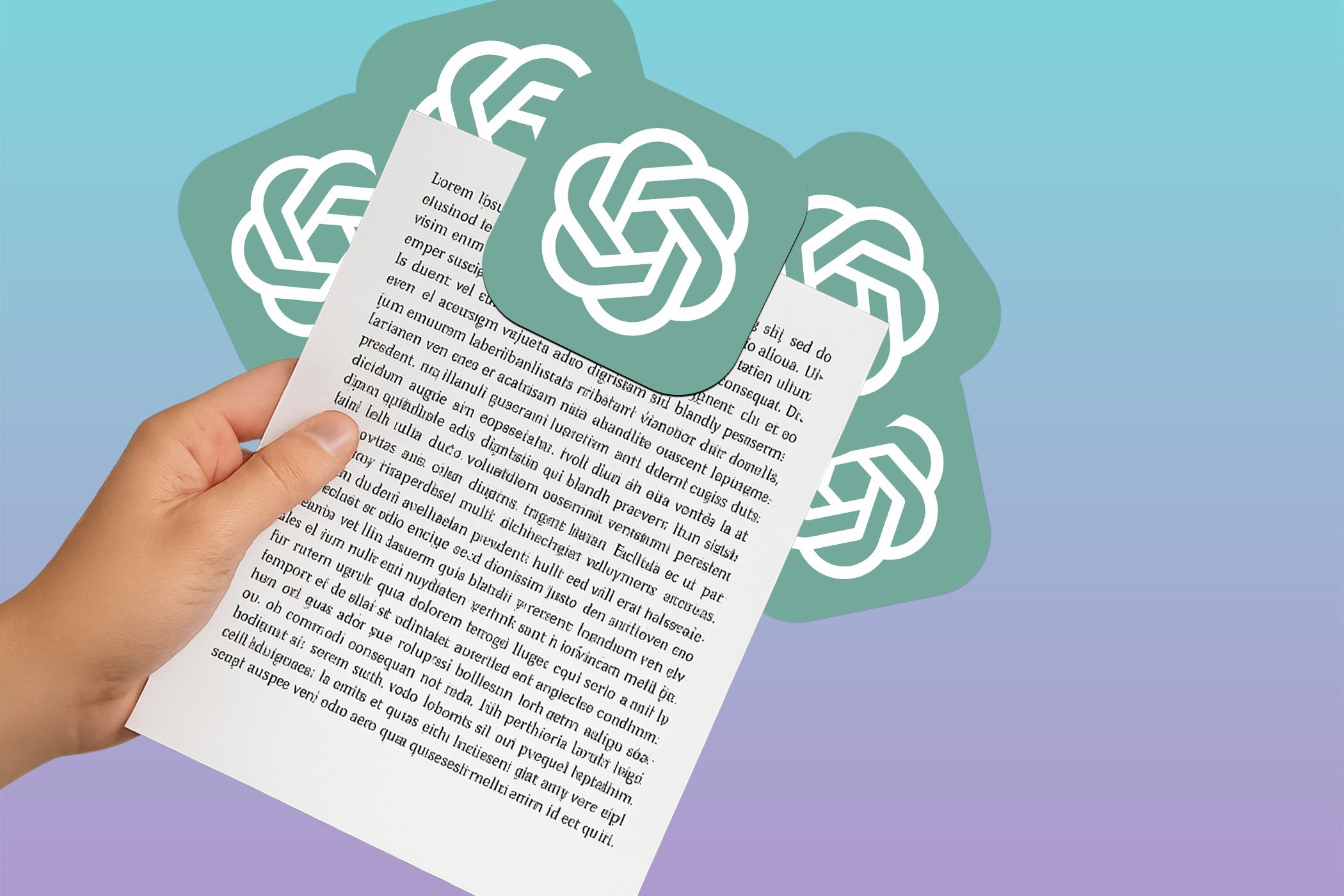
Related
6 Topics I Don’t Trust ChatGPT With—Even Though I Love It
ChatGPT is incredibly useful, but there are a few conversations where it’s best not to use it.
Regardless, if you don’t want AI chatbots getting smarter off of your data, and want to work with an AI chatbot without worrying about where your data might end up, Lumo is the only viable option.
